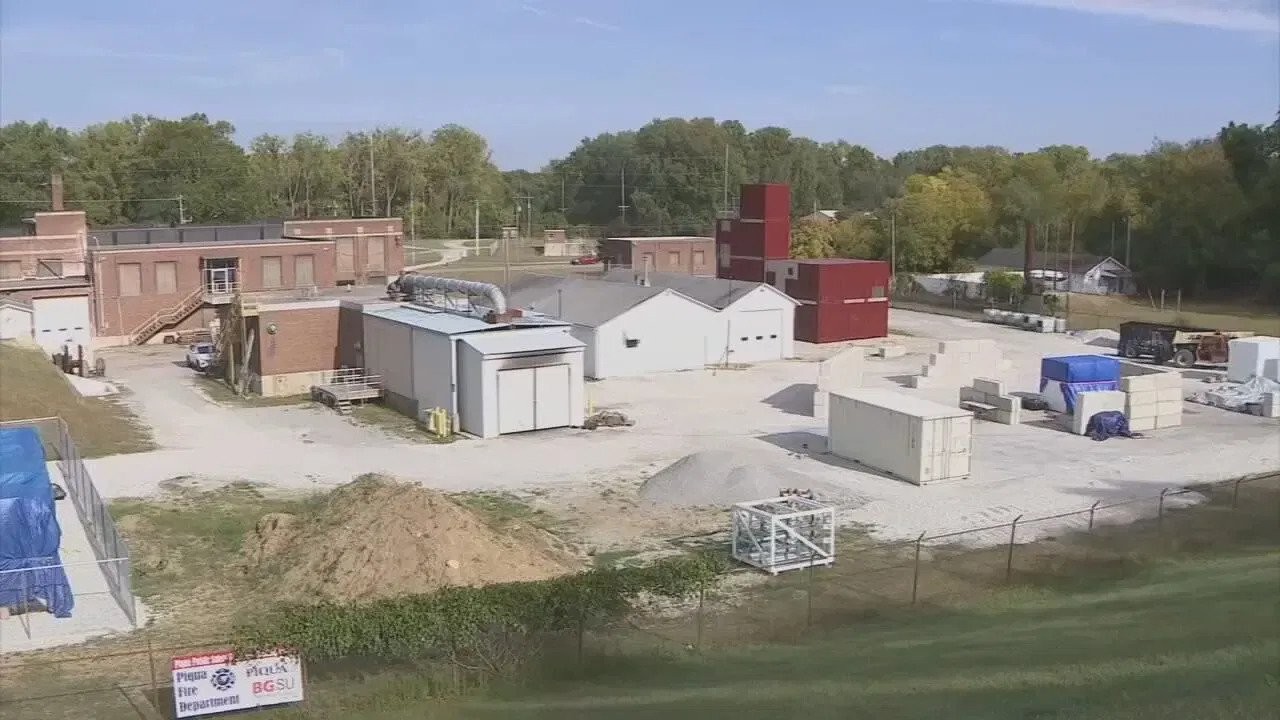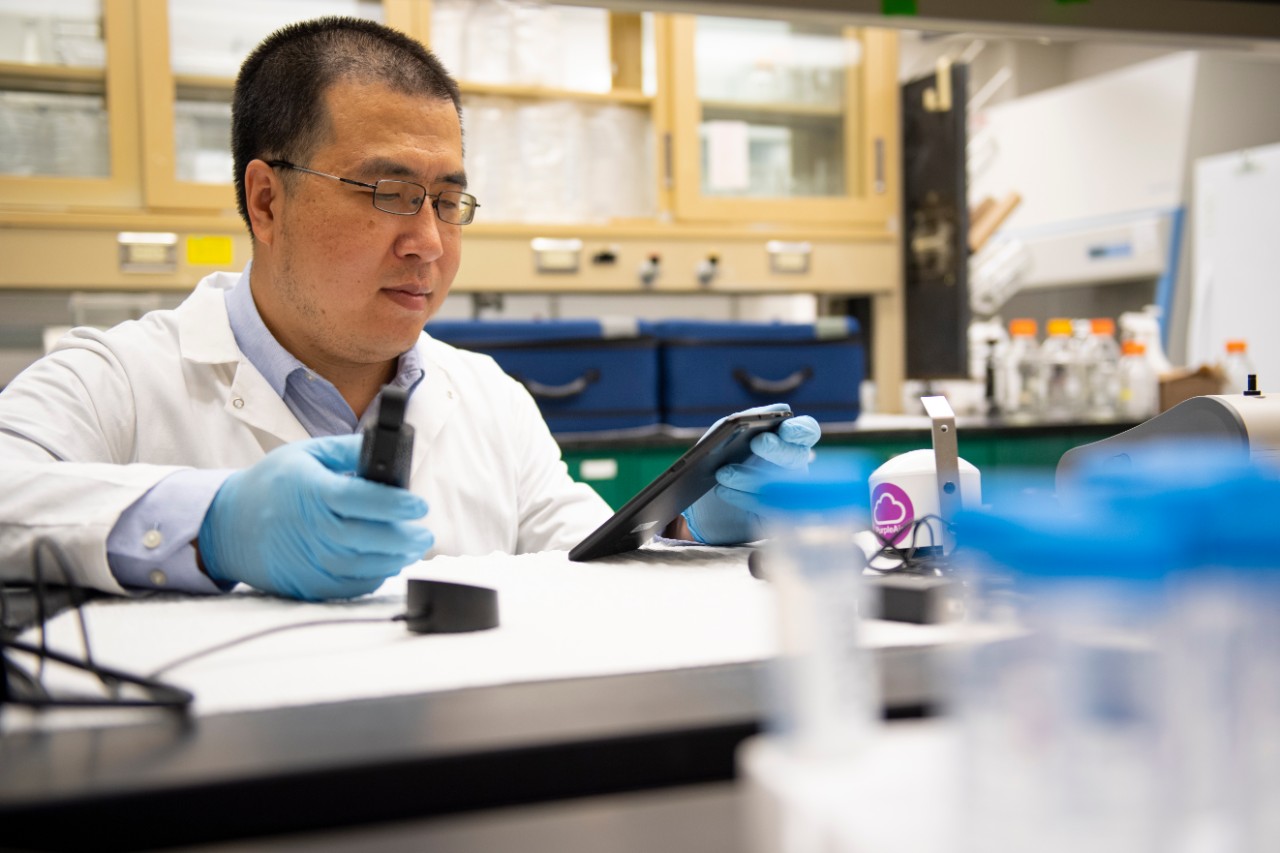
Dayton 24/7 Now: Environmental concerns after lithium-ion battery burns in Piqua, why the company was allowed to police itself
UC expert explains the environmental and health impact
People in the Dayton, Ohio suburb of Piqua are expressing concerns about the city burning lithium-ion batteries at a training facility near the Great Miami River.
The program had been going on for five years, since 2018, but the environmental impact of these lithium-ion battery burns is still unknown. After protests and demands for answers from city officials, the City of Piqua stopped its battery burn program on September 21, 2023. This after a site inspection from the Ohio EPA and RAPCA found two violations.
Dayton 24/7 Now produced a story on the issue, interviewing Jun Wang, PhD, of the Department of Environmental and Public Health Sciences at the UC College of Medicine.

Jun Wang, PhD, of the Department of Environmental and Public Health Sciences in the UC College of Medicine
“So lithium-ion batteries are actually quite dangerous, not even with just burning, the dangers come from chemicals in those batteries,” Wang said.
Wang said that the biggest concern of burning lithium-ion batteries is the air quality. He says chemicals inside those batteries include things like fluoride, hydrogen cyanide, and hydrogen fluoric acid.
“Of course, that's the normal phase, while it's actually burning, you add to the normal combustion products without burning anything, for example carbon monoxide, carbon dioxide, nitrogen oxides and other particulate conditions,” said Wang.
He was asked by Dayton 24/7 Now of the chemicals he mentioned, how could that affect someone breathing them in.
“Most of those toxic chemicals exist in a gas phase, which means they disperse fairly quickly. That's both good and bad," Wang said. "The good thing is when they disperse, they get diluted by the air. The bad thing is they disperse very quickly so it depends how far away you live from this facility, or how far away you work from this facility. It also depends on wind direction, if you are downwind to the release of those pollutants, that will have a lot of issues for your respiratory system, so people with asthma or COPD are particularly vulnerable to those gasses because they are very corrosive and some are very toxic even at a trace level, so even if you inhale a little bit you might have a longer problem.”
Lead photo of Piqua fire training facility/Dayton 24/7 Now
Next Lives Here
The University of Cincinnati is classified as a Research 1 institution by the Carnegie Commission and is ranked in the National Science Foundation's Top-35 public research universities. UC's graduate students and faculty investigate problems and innovate solutions with real-world impact. Next Lives Here.
Related Stories
2021 University Recognition Ceremony honors student achievements
April 13, 2021
The University of Cincinnati recognizes students each year who have made significant service, leadership, and academic contributions to the UC community. These students exemplify the spirit of what it means to be a Bearcat.
UC Day of Giving a success
April 28, 2021
University of Cincinnati Day of Giving’s 24-hour challenge was a tremendous success this year, raising $2,219,197 with 3,232 gifts. The fourth annual UC Day of Giving raised its most money to date with alumni, donors, students, faculty and staff joining together to support UC and UC Health.
President picks exceptional talent
April 28, 2021
The University of Cincinnati 2021 Presidential Leadership Medal of Excellence Awards honor six undergraduate scholars for scholarship, leadership, character, service and the ideals of the university. Awardees are spotlighted for exceptional academics, creativity, community service and innovation.
Grad students earn president's highest honor
April 28, 2021
The University of Cincinnati 2021 Presidential Medal of Graduate Student Excellence Awards honor three graduate scholars for scholarship, leadership, character, service and the ideals of the university. Awardees are spotlighted for exceptional academics, creativity, community service and innovation.
GIVEHOPE and BSI Engineering Celebrate Ten Years of Driving Research
August 3, 2021
Years after two personal losses from pancreatic cancer, Cincinnati-based nonprofit GIVEHOPE and consulting firm BSI Engineering are celebrating a philanthropic partnership that has funded 13 pilot research projects at the University of Cincinnati Cancer Center.
Finding community and building a future
July 9, 2021
As a University of Cincinnati College of Medicine student, Sarah Appeadu, MD, ’21, remembers journaling on the “3 Cs” that got her through medical school: Community, community, community. Now, when she lists the people who supported her through four years of training—the last year in a global pandemic—it keeps growing: her family, her church, her classmates, and the college’s Office of Student Affairs and Office of Diversity, Equity and Inclusion. “I look back and it was such a crucial time to really be nurtured in that way,” she says. “I’m so thankful that I had those people. It shows being around the right people really mattered. That’s my same hope for residency even.”
UC to honor 2,079 grads at summer Commencement
August 2, 2021
UC celebrates the 2021 summer Commencement on Friday in two ceremonies at Fifth Third Arena. On Saturday, UC will recognize 2020 grads with an in-person Commencement celebration.
New York Times: Flint Weighs Scope of Harm to Children Caused by Lead in Water
February 1, 2016
Kim Dietrich, a professor of environmental health at UC's College of Medicine, is quoted in this story on the medical problems that could develop among the thousands of young children exposed to lead-contaminated water in Flint, Mich.
Cancer-Causing Gene Found in Plasma May Help Predict Outcomes for Patients
February 18, 2016
Researchers at the University of Cincinnati have discovered that a human cancer-causing gene, called DEK, can be detected in the plasma of head and neck cancer patients.
UC Receives $1.9 Million to Study Pain
February 15, 2016
Jun-Ming Zhang, MD, of the UC College of Medicine, is the principal investigator of a $1.95 million grant to study the interacting roles of the sympathetic and sensory nervous and immune systems in back and neuropathic pain models.
